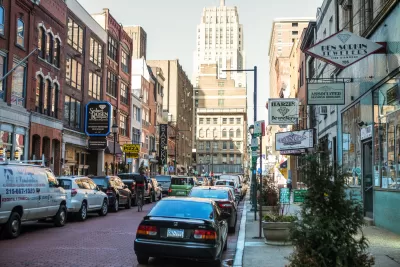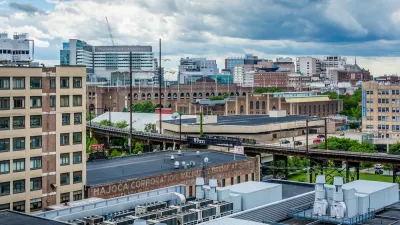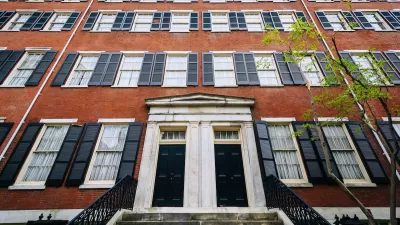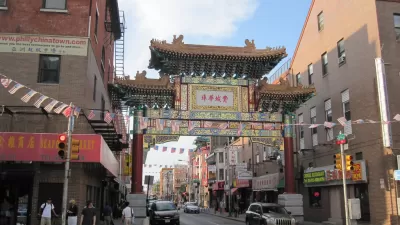Downtown gentrification threatens to displace skilled artisans in a district where workshops go back five generations. Some of the jewelers own their premises, but the rewards for building pricey condos are tempting.

Inga Saffron writes, "Maybe because working factories have virtually vanished from the urban landscape, we rarely think of Philadelphia - never mind Center City - as a place where stuff gets made. Yet, right in the shadow of Washington Square's pricey high-rise condos, dozens of workshops [...] have somehow managed to survive on the upper floors of historic Jewelers' Row."
Philadelphia's Jewelers' Row is one of the last "maker spaces" still operating in a major American downtown. Calling to mind an age of local manufacturing and distribution, the area is ripe for development into luxury housing.
The jewelry business encourages vibrancy and a mix of uses that might disappear once the standard downtown gentrification narrative takes hold. Building owners connected to jewelry face a choice between tradition and profit.
From the article: "If [building owner David Perlman] is tempted to build high-rise apartments there, the city will lose an important makers space. The term still conjures up a room full of hobbyists learning to rewire old lamps, but such small manufacturing-friendly centers are actually crucial to helping cities bring back industrial jobs, says Ilana Preuss, whose company, Recast City, advocates for makers."
FULL STORY: Changing Skyline: Jewelers' Row: A space for makers at a crossroads

Trump Administration Could Effectively End Housing Voucher Program
Federal officials are eyeing major cuts to the Section 8 program that helps millions of low-income households pay rent.

Planetizen Federal Action Tracker
A weekly monitor of how Trump’s orders and actions are impacting planners and planning in America.

The 120 Year Old Tiny Home Villages That Sheltered San Francisco’s Earthquake Refugees
More than a century ago, San Francisco mobilized to house thousands of residents displaced by the 1906 earthquake. Could their strategy offer a model for the present?

HSR Reaches Key Settlement in Northern California City
The state’s high-speed rail authority reached an agreement with Millbrae, a key city on the train’s proposed route to San Francisco.

Washington State Legislature Passes Parking Reform Bill
A bill that would limit parking requirements for new developments is headed to the governor’s desk.

Missouri Law Would Ban Protections for Housing Voucher Users
A state law seeks to overturn source-of-income discrimination bans passed by several Missouri cities.
Urban Design for Planners 1: Software Tools
This six-course series explores essential urban design concepts using open source software and equips planners with the tools they need to participate fully in the urban design process.
Planning for Universal Design
Learn the tools for implementing Universal Design in planning regulations.
Ada County Highway District
Clanton & Associates, Inc.
Jessamine County Fiscal Court
Institute for Housing and Urban Development Studies (IHS)
City of Grandview
Harvard GSD Executive Education
Toledo-Lucas County Plan Commissions
Salt Lake City
NYU Wagner Graduate School of Public Service





























